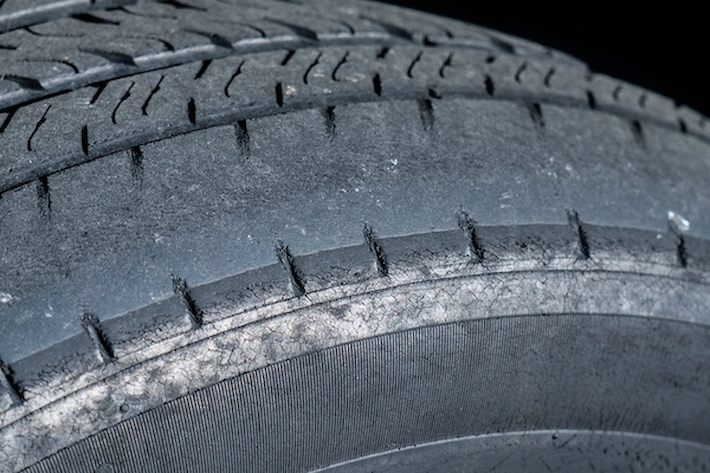Tires are some of the most important parts of your car. They’re the direct link between the car and the road, determining grip, control, braking and acceleration. Well-inflated and aligned tires also have a huge say in handling, ensuring safety, predictability and comfort levels when roads turn bad. And for many Canadians, winter tires are a legal requirement.
Car Tire Fundamentals
If you bought your car new, chances are it came with all-season automotive tires primed for all-year use. These are the middle-ground between summer and winter options. Each type differs in the tread designs and rubber compounds that go into its construction, with obvious benefits for different temperature ranges. Let’s take a closer look at each.
Summer Tires
As their name suggests, summer tires provide optimal performance, road holding and durability in warmer months. They’re designed with shallower tread patterns and harder compounds that benefit from improved traction and enhanced control, as well as lower wear up to temperatures of 7 degrees Celsius. This leads to multiple performance advantages, including faster acceleration, shorter braking distances and more grip on slippery roads and in the rain. With less rolling resistance, they’re also better at keeping fuel use low and cabin comfort high with less noise.
Winter Tires
Several Territories and Provinces mandate the use of winter tires in colder months. On roads covered with sleet, ice and snow, winter tires trump their summer siblings with deeper and more pronounced treads to bite into the road, and softer rubber that keeps the tires flexible in colder weather. This is crucial in providing optimal grip, ensuring predictable braking and stable handling, whether in sudden stops, on inclines or basic maneuvers like turns. In warmer weather (above 10 degrees Celsius), they will however, endure higher wear and be significantly noisier than summer options.
All-Season Tires
These are a good all-round option, providing versatility across varied weather and driving conditions, including dry pavement, wet roads and light snow. They feature moderate tread depths, with sipes and grooves for improved grip in rain and snow. They’re convenient in that they save time in annual tire changes, incur lower costs in purchasing separate tire sets, and come with good durability and balanced performance for areas with mild winters.
Signs of Tire Wear

Having the right set of tires for the road and weather conditions is paramount. But, so is having tires that are in good condition. Common signs you’ll soon need replacements are:
- Low tread depth: Tires that have been worn down to 1.5mm need to be promptly replaced. Not only do you risk being fined, but the reduced tread impacts grip and safety, particularly in wet conditions. Some manufacturers include wear indicators, making inspections quick and simple.
- Visible cracks, tears and thinning: Inspect them on a flat surface for typical wear signs, including cracks, cuts, tearing and fissures. Bulging or blistering areas also mean there’s damage on the inside.
- Discolouration and stains: Discolouration comes with advanced age, with protective chemicals in the tires reacting with oxygen and causing browning. Prolonged UV exposure and aggressive cleaning can also result in permanent staining. When accompanied by visible cracks, it’s time to change to a new set.
- Performance issues: Look for unusual vibrations through the wheels and the steering, excessive noise, and reduced grip in wet weather. Underinflated, misaligned and even models with uneven wear will also cause the car to pull left or right. Moreover, overinflating your automotive tires advances wear and reduces the contact area with the road, leading to compromised performance and stability.
Choosing the Best Tires for Your Car
Besides matching tires to road and weather conditions, the right auto tire depends on what, where and how you drive. In this context, tires marketed towards hatches and sedans will differ in tread patterns, sidewall height, compounds and size (among other factors) from those used in bigger SUVs and 4WDs meant for a mix of off and on-road driving.
There’s also a tiered ranking, particularly in summer models, when it comes to performance, wet weather road holding, overall grip levels, braking distances, noise levels, rolling resistance and how long they’re rated to last. The better these numbers are, the higher the cost. With that said, there are common factors across all tire types to consider when buying:
- Overall width (in millimetres)
- Aspect ratio or height, again in millimetres
- Wheel diameter in inches
This is found on the sidewall. Additionally, you’ll find information relating to the intended use, with markings for vehicle categories. Tires with “P” markings are meant for passenger cars, “LT” denotes light trucks, “ST” is for special trailers and “T” is for temporary use, often in smaller and narrower dimensions.
There are also tires meant for commercial vehicles (“C”), and motorcycles (“M”). And information regarding the construction. Radial or “R” are more common in newer cars (with the internal cord plies running radially at 90 degrees to the direction of travel) than older diagonal and bias tires.
As an illustration, the most common tires in Canada are P 225 65 R17 types, meaning they are meant for passenger vehicles, with a width of 225mm, height of 65mm and fit 17-inch wheels. And are in a radial design, which promises better grip, lower rolling resistance, less wear and improved ride comfort.



